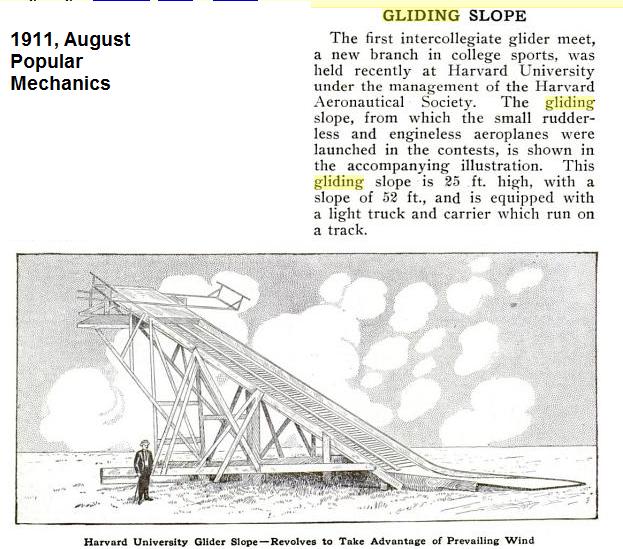|
Page 10 of November 2010 of Lift In 1911 ... an incline for launching
"The very first wave of collegiate interest in gliders started around 1909, and resulted most notably in the first Intercollegiate Glider Meet, hosted by Harvard on Memorial Weekend, May 28-30, 1911. The contest was sanctioned by the newly-incorporated "Intercollegiate Aeronautical Association", founded by a Penn graduate student. At that time, aeronautics was just emerging as an academic discipline out of naval or mechanical engineering, and student laboratory work was at the cutting edge of research. Since engines were prohibitively expensive and time-consuming, the focus was building airframes for gliding. The IAA recognized two categories of flying machine, "body-control" (hang-glider) and "mechanical-control" (sailplane). Glide ratio was the prime figure-of-merit at Harvard's Squantum field in 1911, and the host had built an elaborate swiveling ramp from which competitors could consistently launch into the wind. MIT brought the biggest team, made the largest number of flights, and was the winner of the body-control class. Tufts won the more prestigious mechanical-control class, and the Cornell glider was judged the most promising and well-made design (it looked much like a 1912 Curtiss pusher with no engine)." Source of clip: HERE Photos, anyone? Intercollegiate Aeronautical Association of America "During his years at Penn, Richardson gave popular lectures about aeronautics at various colleges, universities and other places including the Franklin Institute in Philadelphia. His illustrated lectures included lantern slides and moving picture footage of the making and flying of various types of flying machines." http://www.archives.upenn.edu/faids/ups/ups503guide.pdf Anyone near to research this? |
